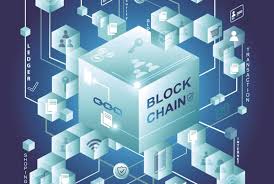Setting up a blockchain development environment involves configuring the necessary tools and components to develop, test, and deploy blockchain applications. Here are the key steps to set up a basic blockchain development environment:
- Choose a Blockchain Platform:
Select a blockchain platform that aligns with your project requirements. Popular options include Ethereum, Hyperledger Fabric, Corda, or other platforms depending on your specific needs, such as public versus private blockchain, smart contract support, consensus mechanisms, and scalability. - Install Development Tools:
Install the necessary development tools for your chosen blockchain platform. This typically includes:
- A code editor or integrated development environment (IDE) such as Visual Studio Code, IntelliJ IDEA, or Eclipse.
- A programming language and related libraries specific to the blockchain platform. For Ethereum, you’ll need Solidity, and for Hyperledger Fabric, you may use Go, Node.js, or Java, depending on the application components.
- Set Up a Local Blockchain Network:
Configure a local blockchain network to develop and test your applications. This can be achieved using different tools depending on the blockchain platform:
- For Ethereum, you can set up a local development network using tools like Ganache or Hardhat.
- For Hyperledger Fabric, you can use the Fabric development environment (Fabric-Dev-Servers) or the Hyperledger Fabric Test Network.
These tools provide you with a local blockchain network with pre-configured nodes, allowing you to deploy and test your applications in a controlled environment.
- Install and Configure Blockchain Development Frameworks:
If you’re using a blockchain platform that offers development frameworks, such as Truffle for Ethereum or Hyperledger Composer for Hyperledger Fabric, install and configure these frameworks. They provide additional tools, libraries, and utilities to simplify smart contract development and deployment. - Use Development/Test Networks:
Besides the local blockchain network, you may also need access to development or test networks specific to the blockchain platform. These networks simulate the behavior of the live blockchain network and allow you to test your applications in a more realistic environment. For Ethereum, you can use test networks like Ropsten, Rinkeby, or Kovan. - Explore Blockchain APIs and SDKs:
Familiarize yourself with the blockchain platform’s APIs and Software Development Kits (SDKs). These resources provide libraries, documentation, and sample code to interact with the blockchain platform’s features, such as deploying smart contracts, invoking transactions, and retrieving data. - Join Developer Communities:
Engage with the blockchain developer community by joining forums, online communities, and attending meetups or conferences. These platforms provide valuable resources, tutorials, and support from experienced developers who can help you with specific questions or challenges you may encounter during development.
Setting up a blockchain development environment requires a combination of tools, frameworks, and resources specific to the chosen blockchain platform. It’s important to refer to the documentation and resources provided by the platform to ensure you have the necessary components and configurations to start building blockchain applications.
Remember to refer to the platform-specific documentation and community resources for detailed instructions on setting up the development environment. It’s also a good practice to use version control systems like Git to manage your blockchain projects and collaborate with other developers effectively.
